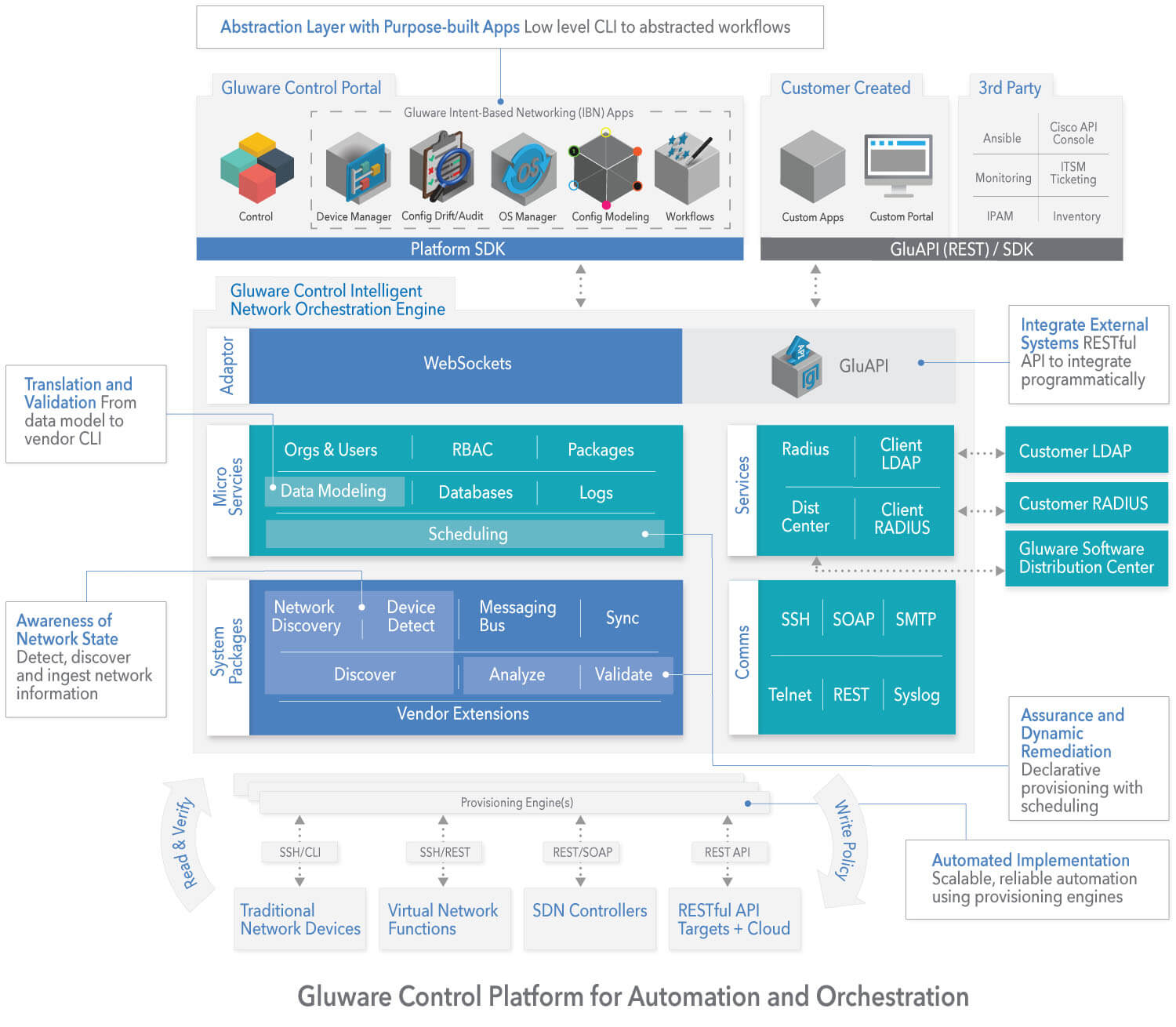
While there is no true single standard specification for Intent-based Networking Systems, use the term to describe their offerings and the networking community is left to sort of the differences between the reality and the hype. To help bring clarity to the cause, Gartner produced an “Innovation Insight: Intent-Based Networking Systems” paper on the topic, published in February 2017 ID: G00323513. Gartner defined an Intent-based Networking System as one that provides four capabilities:
The system takes a higher-level business policy (what) as input from end users and converts it to the necessary network configuration (how). The system then generates and validates the resulting design and configuration for accuracy.
They analyze the current state of the network using device configuration and drive the operational state, or pull state tables like Forwarding Information Base (FIB), Routing Information Base (RIB) and others. Using this information the validation solutions can predict the network forwarding behavior and perform various “what if” scenarios to check changes before implementing on the network. Most solutions in this category are “read-only” and do not actually implement automated changes on the network.
They are generally narrow in scope, like a data center-specific solution, or a SD-WAN solution and are very prescriptive. While they meet the criteria of IBN, the practicality of implementation is limited due to the narrow focus and need to rip-and-replace the existing network or completely re-write the configuration on every network device which is highly disruptive.
Gluware, as an example, provides the ability to ingest the current network device information, configured features along with the policies. The ability to automate the “brownfield” network is critical to large enterprises who are supporting multi-vendor, multi-platform networks that evolve over time. Gluware provides the ability to abstract configuration information, automate the implementation, understand the current configuration state and only apply the required changes and validate the configuration and operational state.
Gluware, Inc.
500 Capitol Mall, Suite 2350
Sacramento, CA 95814
1-916-877-8224
sales@gluware.com
For general inquiries info@gluware.com
support.gluware.com
support@gluware.com
US: 1-855-458-3822
UK: 0808-134-9906
Australia: 1-800-987-824
NZ + 0800-005-106
Support Portal
"*" indicates required fields